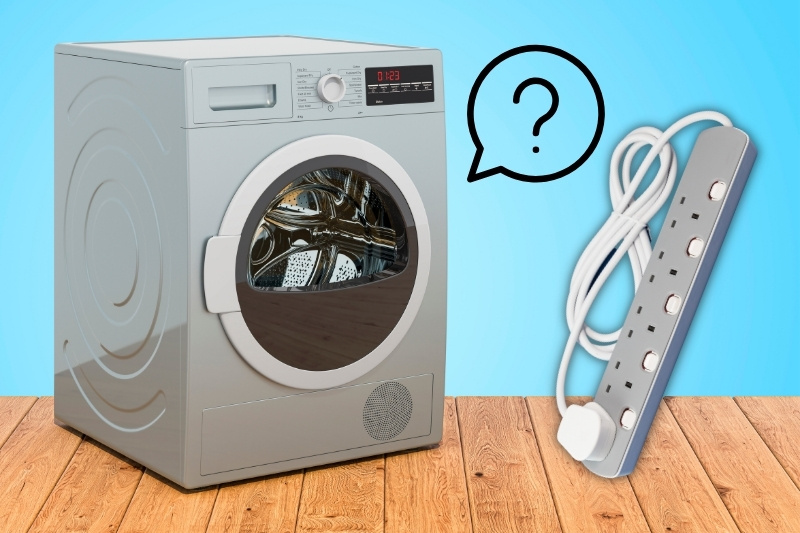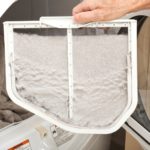The task of installing a tumble dryer is challenging enough and when you start considering where to place it in relation to a plug socket, things get trickier.
Installing your new dryer right next to a plug socket isn’t always practical.
Using an extension cord to connect the dryer to a socket may make things easier, but it’s important to be aware of the potential safety risks.
Running big appliances off an extension lead can be extremely dangerous, as it can cause the plug in the wall socket to overheat.
Here we’ll take a look at why that is and whether you can use a tumble dryer with an extension lead or not.
Can You Plug a Tumble Dryer into an Extension Lead?
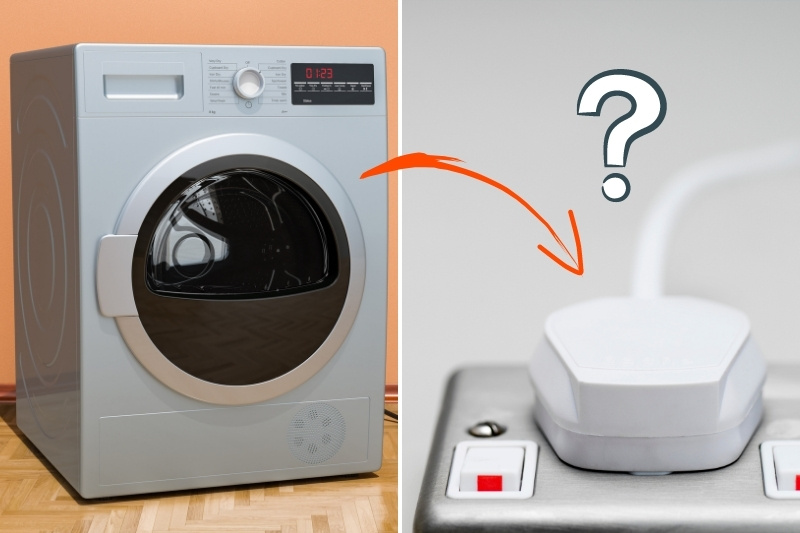
Whether or not you can safely plug a tumble dryer into an extension lead depends on three main factors:
- The wattage of the tumble dryer
- The maximum load of the extension lead
- Whether or not anything else is plugged into the extension lead
As long as the wattage of the tumble dryer is less than the maximum load of the extension lead, and nothing else is plugged into it, it should be safe to use.
For example, a 2,600-watt tumble dryer can be safely plugged into an extension lead that has a maximum load of 3,500 watts.
However, we’d still recommend avoiding using an extension lead with a tumble dryer wherever possible, just to be on the safe side.
The danger is that the extension lead can become overloaded if you’re not careful. This could make the plug in the wall socket overheat and potentially cause a fire.
However, there are ways to safely use an extension lead with a tumble dryer if you are careful, as we discuss below.
How to Use a Tumble Dryer with an Extension Lead Safely
1. Choose a heavy-duty extension cord
If you’re using a tumble dryer with an extension lead, it should be capable of handling a significant amount of power flowing through it for your protection.
One reason for an extension cord to overheat is its thinness. If your cord is thicker, there will be fewer chances of overheating since it can handle more wattage and amperage.
Heavy-duty extension leads are thicker than regular leads. Not all extension leads are built the same so ensure you’re using one capable of handling high levels of power.
You can buy single-socket extension leads that are designed for handling large appliances, so if you are buying an extension lead for your tumble dryer, one of these is ideal.
One of the most popular brands of single-socket extension leads is Masterplug, who make this 5-metre heavy-duty plug that many people use for tumble dryers. It has a maximum load of 3,120 watts, so you shouldn’t use it with a dryer that uses more power than that.
2. Shorter cords are better
Extension leads can reach up to 50 metres long. However, the lengthier ones usually can’t handle heavy electrical loads and can overheat.
To travel down a long extension lead, the electrical current needs to work harder to reach its destination, which can lead to overheating.
Electrical Safety First recommend never using an extension lead that is longer than 15 metres.
With tumble dryers though, it’s best to choose the shortest one possible, and position the tumble dryer as close to the closest socket as possible.
Remember, the cord should be long enough to reach the socket but it should be short enough to avoid overheating. Aside from safety, choosing shorter extension leads can save you money since these are cheaper than longer cords.
3. Don’t use the extension lead with other appliances
Tumble dryers alone are electrically demanding, so it isn’t practical to use the same lead with other appliances. Doing this will result in too high an electrical demand and insufficient supply.
Extension cords are fairly affordable. So, it’s better to purchase and use a separate extension lead for your dryer, and another one for less demanding appliances. It’s beneficial in the long run since it will help prevent electrical fires.
4. Consider installing a new plug socket instead
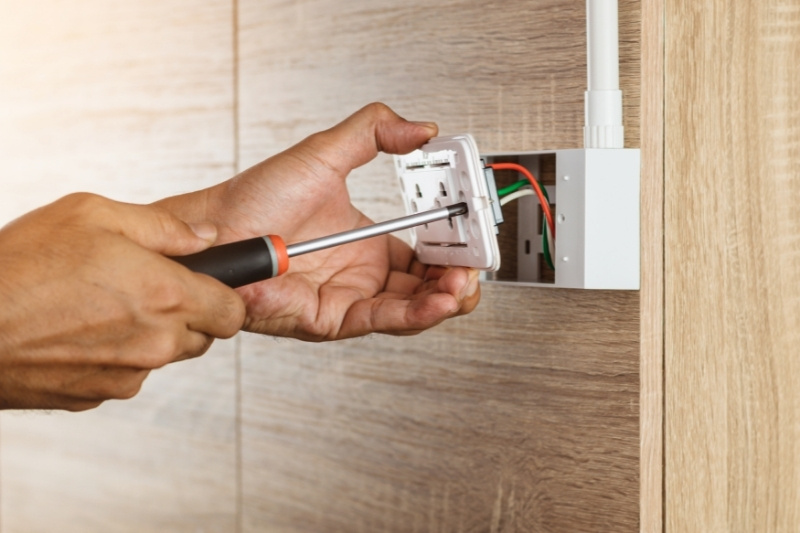
If in doubt, it may be the best idea to have a new plug socket installed. This will increase the versatility of your room and may not be as expensive as you think. The cost to have a new socket installed will be around £100-£200.
While this may be an additional expense you didn’t want to pay, it can give you peace of mind instead of running your tumble dryer through an extension lead.
How Much Power Do Tumble Dryers Use?
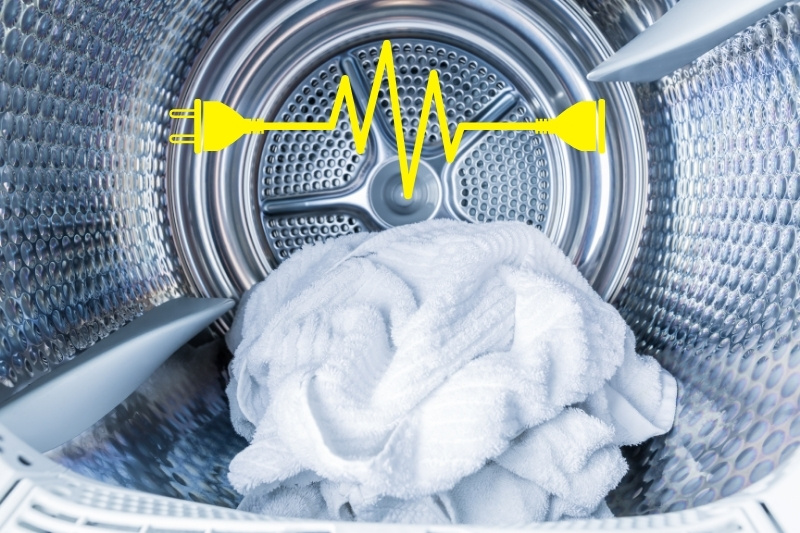
Large appliances like tumble dryers need a lot of electricity to power them. The power required for a tumble dryer can range from 1,800 to 5,000 watts.
Since large amounts of electricity are required for your dryer to work, it can be risky to use an extension lead with them.
Most extension leads can take a maximum of load of 3,500 watts. This figure should be printed on the extension lead, so you can compare the wattage of your tumble dryer with the maximum load of the extension lead.
Many tumble dryers use less than 3,500 watts, so in theory it should be safe to use them with an extension lead, as long as nothing else is plugged into the extension lead at the same time.
As well as the danger of overloading the extension lead, another issue is that many standard extension leads are too thin and/or too long for safe use with a tumble dryer.
These qualities can lead the extension to trip or overheat. When this happens, the extension lead’s plastic casing melts and may cause an electrical fire.
Final Thoughts
Electric dryers use a lot of electricity, so using one with a standard extension lead can be dangerous. If you need to use one, make sure it is heavy-duty and as short as possible.
If you’re using an extension lead with a tumble dryer, don’t plug anything else into it. Ideally, use a heavy-duty, single-socket extension lead like the Masterplug EXS1315B-01 rather than a standard extension lead with multiple sockets.
Check the wattage of your tumble dryer against the maximum load of the extension lead to make sure you won’t overload it.

I’m a mother of three who loves going on fun adventures with my family. With three little ones, I’ve learned the hard way how to keep a busy home clean! I want to share my tips and tricks to make your life as easy as possible.
